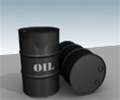US’ Peabody cuts 2022 seaborne thermal coal output guidance amid rain, COVID impact

Peabody Energy, the largest coal producer in the US, has cut its full-year production guidance for seaborne thermal coal by 1 million-1.3 million short tons as rains impacted productivity in the second quarter while COVID-19 related absenteeism is expected to impact output in the third quarter, the company said in its quarterly result statement July 28.
Peabody increased its full-year cost guidance for seaborne thermal coal by $8/st to reflect higher sales price sensitive costs, higher fuel costs and the continued impact of rain on production.
Seaborne thermal coal volume for 2022 is now expected to be between 16 million-16.7 million st, with an average cost of $43-$47/st.
During the second quarter, seaborne thermal coal sales were at 4 million st, up from 3.8 million st in the previous quarter. It increased exports by 22% to 2.2 million st. The average export realized price increased 21% on the quarter to $143.43/st, while the total cost per ton was $43.85/st.
With coal prices hitting record highs globally due to the war, US miners are seeing strong domestic demand and increasing exports as Europe’s ban on Russian coal has spurred demand from elsewhere including the US, Indonesia and South Africa. While surging natural gas prices have increased demand for coal, supply tightness has led to high coal prices too.
“While we expect a strong second half, severe July rains in Australia will impact third-quarter production, sales and costs, and we have revised full-year expectations to reflect these continuing challenges,” Peabody President and CEO Jim Grech said.
As global coal demand in the aftermath of Russia’s invasion of Ukraine drove prices to record highs, Peabody’s revenue increased by over 80% on the quarter to $1.32 billion “due to higher realized prices in every segment.”
“Second-quarter seaborne thermal segment costs of $43.85/st were higher primarily due to higher sales price sensitive costs and fuel prices,” the company said. “Substantial rain and COVID impacts during the quarter reduced overburden removal productivity by 18%, which will impact second-half volume.”
Meanwhile, the seaborne metallurgical coal output forecast for 2022 was kept between 6.8 million-7.5 million st, with an expected average cost of $115-$125/st. The company expects the full-year volume near the high end of the previous guidance, which was at 6.5 million-7.5 million st.
The segment’s sales during the second quarter were at 1.6 million st at an average realized price of $330.56/st, up 28% on the quarter.
The Powder River Basin, or PRB, volume for 2022 is expected to be 80 million-90 million st, down from 88 million-95 million st, due to increasingly weak rail performance and uncertainty around improvement to meet current year customer nominations.
PRB sales in Q2 were at 18.5 million st, down from 20.6 million st a quarter ago and 22.5 million st in April-June last year, at an average realized price of $12.44/st. “Tons sold for the quarter were impacted by further degradation of PRB rail performance, resulting in 4 million less tons shipped than nominated by customers,” it said.
PRB costs per ton increased by 6% over the prior quarter to $12.55/st, primarily due to lower production volume and higher fuel costs.
Source: Platts

 Hellenic Shipping News Worldwide Hellenic Shipping News Worldwide, Online Daily Newspaper on Hellenic and International Shipping
Hellenic Shipping News Worldwide Hellenic Shipping News Worldwide, Online Daily Newspaper on Hellenic and International Shipping





















 PG-Software
PG-Software